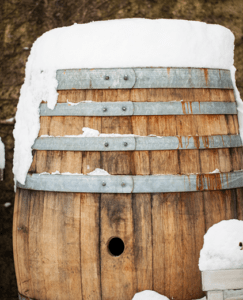
Winter is not only a time of celebration but also a great time for specialty beers. Many breweries make small batches of their own special beer recipes to sell seasonally. These beers can range from simple to complex and can be made “extra wintery” through a specific fruit ingredient or special spice blend. If you are looking to add to your tasting arsenal, here are a few specialty brews that we recommend keeping an eye out for this season:
Anchor Steam Christmas Ale – Since 1975 Anchor Brewing has created distinctive Christmas Ale. This ale is available only from early November to mid-January and is a rich, dark spiced ale. Each year the Christmas Ale recipe changes – just like the bottle label – but their intent of “joy and celebration of the newness of life” remains the same.
Goose Island Christmas Ale – Similar to Anchor Steam, Goose Island changes the recipe to their Christmas Ale each year so there is something different to look forward to every year. Their Christmas Ale is a bitter brown ale with additional spices that change year to year. Goose Island is only available from November to December and they suggest pairing their Christmas Ale with Aged Gouda or a Dry Jack cheese.
Samuel Smith Winter Welcome Ale – Samuel Smith’s Winter Welcome Ale is a full body beer resulting from “fermentation in stone Yorkshire squares” and has an appealing taste to many beer advocates. The type of hops used, Fuggle and Golding, are not kept secret. While the recipe stays constant each year, the image used on their label changes annually.
Heavy Seas Winter Storm Ale – This winter Ale draws on hops from the West Coast and the UK for its pronounced bitterness. A mix of pale and darker malts give it its tawny color and its bigger body. This ale has a nice nuttiness and earthiness to it and is available from October to December. Similar to Samuel Smith’s Winter Welcome Ale, Heavy Seas uses UK Fuggle and Goldings hops. This Ale is ideally paired with a nice Brie cheese or pan-seared steak.
Sierra Nevada Celebration Ale – Sierra Nevada’s Celebration Ale has been brewed since 1981 and is a “festive fresh hop holiday fun”. This Celebration Ale is one of the earliest examples of an American-style IPA. This specific ale is best known for its intense citrus and pine aromas. Celebration Ale is bold in taste and features Cascade Centennial and Chinook hops and is best paired with fish and chips or manchego cheese.
Now that we have told you our favorite winter ale, what’s your brew of choice this time of year? If you want to get started on brewing a winter batch, you can start with our Homebrewing Kit!
How to Brew Beer in Your Own Kitchen
 Beer is an all time favorite drink for most people around the globe. The various unique characteristics of beer make us inclined towards it and want it all the more. What becomes irritable is the same droning taste that happens to be in every large beer company. The best way to get away with this monotony is to learn to brew your own beer.
Beer is an all time favorite drink for most people around the globe. The various unique characteristics of beer make us inclined towards it and want it all the more. What becomes irritable is the same droning taste that happens to be in every large beer company. The best way to get away with this monotony is to learn to brew your own beer.
And you don’t need an expert to do that. You can brew your beer at home with great ease and simplicity. It might sound difficult, but with a little bit of help and some homebrew stuff you can create a unique beer that probably isn’t brewed even in the best breweries. The advantage of learning to brew beer is that the flavor is authentic. Moreover, the beer you brew can be in accordance with your own preferences.
If you are an adventurous beginner, browse through different recipes and join forums. A number of people share their experiments and their preferable styles of brewing beer. On the other hand if you are one of those who wish to stay on the safer side, then look for a home brewing kit. These kits are available in almost all countries. All you have to do is follow the kit guidelines and wait for the result. Once you have practiced enough, then you can experiment and make beer according to your own needs.
There are different methods involved in brewing beer. From simplest to most complex are: malt extract method, partial-mash method, and full-mash method. The brewing becomes more involved with each progressive step along these advancing methods of brewing, but the outcome will definitely be more and more unique and matchless. The types of beer that one can brew are limitless. Extend your horizon by experimentation and trial and error.
Knowing how to brew beer is something that everyone should know. Once you start learning this amazing art, it will become your hobby.
My Persimmon Wine Won't Clear!
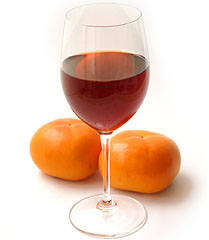 I have been making wine for over a year and lately have had no trouble clearing the wines. I started a 6 gallon batch of persimmon wine 1st Nov. According to our wine recipe it should be ready to bottle in the next week but it is still not clear. I have used several clearing agents. Will it clear if I just leave it for an extended period of time? I am going to rack it again. There is a lot of sediment in the bottom of the carboy. I have heard of people making persimmon wine so since I got the persimmons free I wanted to try it. Have you heard from anyone who has made persimmon wine.
I have been making wine for over a year and lately have had no trouble clearing the wines. I started a 6 gallon batch of persimmon wine 1st Nov. According to our wine recipe it should be ready to bottle in the next week but it is still not clear. I have used several clearing agents. Will it clear if I just leave it for an extended period of time? I am going to rack it again. There is a lot of sediment in the bottom of the carboy. I have heard of people making persimmon wine so since I got the persimmons free I wanted to try it. Have you heard from anyone who has made persimmon wine.
Name: Sandra Fey
State: Ky
Hello Sandra,
Thank you for the great question, and yes, I have heard of people making persimmon wine. I have never made it myself, but have partaken in it more than once.
There are a couple of things that could be going on with your wine. The first is that it may still be fermenting, only very slowly. It is not uncommon for a fermentation to drag on for extended periods of time when cooler weather comes upon us. Wine yeast are very sensitive to temperature. If your wine is in the 60’s, instead of the 70’s this could be your issue.
Fortunately, it is very easy to determine if temperature is the culprit. Simply take a hydrometer reading. If you are not getting a specific gravity reading of .998 or less, then the fermentation is not done. If you don’t have a gravity hydrometer, I would strongly urge you to get one. It is the most valuable tool you could have as a home winemaker.
If you discover that the temperature is the issue, the remedy is simple: warm the wine must up. You will see the fermentation become more active so that it can finish up and then clear up!
This second and more serious problem could be your wine has developed a pectin haze. Persimmons have a lot of pectin in them. Pectin is the gelatinous stuff that holds together the fruit fiber. It’s the stuff that allows you to make jellies and jams out of fruit. All good for toast but bad for making wine. If the pectin is not broken down during the fermentation your wine can develop a pectin haze.
This is why most wine recipes will call for pectic enzyme. This will help to break-down the pectin and eliminate the chance of a pectin haze. If you did not use pectic enzyme, or if the pectic enzyme you have is old, than this could definitely be your problem.
One way to test for this is to take a small sample of the wine and add teaspoon of pectic enzyme to it and let sit overnight. It the sample clears without causing any sediment, then a pectin haze is your problem. The only possible way to solve this problem would be with a double-dose of pectic enzyme and patience. Many times the wine will clear up with this treatment within a few weeks, but unfortunately, there are some wines that will never clear.
I hope this helps you out, Sandra,
Ed Kraus
———————————————————————————————————
Ed Kraus is a 3rd generation home brewer/winemaker and has been an owner of E. C. Kraus since 1999. He has been helping individuals make better wine and beer for over 25 years.
How Can I Make Organic Wine From Your Wine Kits?
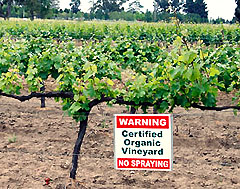 What would I have to eliminate in my wine kit (Cabernet Sauvignon ) to get close to an organic wine without sacrifice taste.
What would I have to eliminate in my wine kit (Cabernet Sauvignon ) to get close to an organic wine without sacrifice taste.
Thank you, Daniel
Name: Daniel B.
State: FL
Hello Daniel,
The whole idea behind organic wine is to grow the grapes without the use of pesticides or other manmade interferences — to keep the growth of the grapes as natural a possible. Unfortunately, we have never seen this type of packaged product made available to the home wine making market.
Most “organic” wines on the market contain sulfites, just like the potassium metabisulfite you will find in the wine ingredient kits we offer., but there are a handful of wineries that do not add sulfites to there wines out of principal.
The reason most organic wineries add sulfites is because the risk of spoilage is so high when they are not. Extreme care has to be taken to insure that the wine is not exposed to airborne contaminants, etc. Everything that come in contact with the wine has to be sanitized to a very high standard. All this takes time and money, and if spoilage does occur, it is usually the entire batch that is lost, not just some. A vineyard can only provide one harvest per year.
For the home winemaker, keeping spoilage from occurring is even harder than it is for the wineries. This is because the smaller batch size that most home winemakers are dealing with. A smaller batch has more surface contact with equipment on a per gallon then a large batch. This is just laws a physics. This extra surface contact per gallon increases the risk of spoilage proportionally. This is why it is so important for the home winemaker to use sulfites in their wine just has 99% of the commercial wineries do.
So to answer your question, regardless of what you leave out of the wine it still would not be consider “organic”, and to leave out the potassium metabisulfite is not practical anyway for the home winemaker.
I hope this helps you out.
Happy Winemaking,
Ed Kraus
———————————————————————————————————
Ed Kraus is a 3rd generation home brewer/winemaker and has been an owner of E. C. Kraus since 1999. He has been helping individuals make better wine and beer for over 25 years.
How Can I Make My Wine Sweeter?
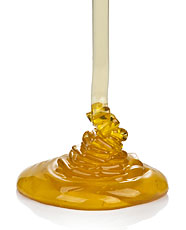 I have used 3 fruit base kits and keep getting a very dry high alcohol content wine. How can I make my wine sweeter.
I have used 3 fruit base kits and keep getting a very dry high alcohol content wine. How can I make my wine sweeter.
Name: Jerrie C.
State: AR
Hello Jerrie,
If you are getting more alcohol than you like in your wines, then you might want to use a wine hydrometer to start controlling your alcohol level. By using the wine hydrometer you can determine how much sugar you need to add to a wine must to get the final alcohol level you want. This assumes that all of the sugar will go towards the alcohol during the fermentation leaving you with a dry wine.
Once the fermentation has completed and the wine has had plenty of time to clear, that is the time to adjust the wines sweetness if desired. Add sugar to taste. It is important to understand that the wine needs plenty of time to clear before sweetening.
We recommend making a sugar syrup comprised of 1 part sugar and 1-2 parts water. Heat on the stove until it the syrup turns clear, and then allow to cool.
Once you have the wine to the sweetness you like it is important that you also add Potassium Sorbate. This is a wine stabilizer that will help to keep your wine from starting a re-fermentation with the new sugars.
To sum up, the sugar you are adding at the beginning of fermentation with the aid of a hydrometer is all contributing to the wine’s alcohol level. The sugar you add after fermentation is contributing to the wine’s sweetness. By handling it in this way, you have complete control of both aspects of your wine.
Happy Wine Making,
Ed Kraus
———————————————————————————————————
Ed Kraus is a 3rd generation home brewer/winemaker and has been an owner of E. C. Kraus since 1999. He has been helping individuals make better wine and beer for over 25 years.
Briess Malt: The Best Part of Food
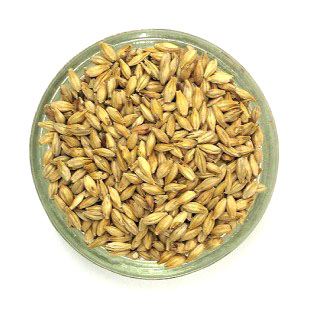 Briess malt is prepared with a dieter’s health in mind. It consists of the right blend of fresh, non-genetically modified organic ingredients and has been dominating the North American food industry for some time. Malt is a leading part of pet food, brews and beverages and makes for quick, healthy, low-fat recipes.
Briess malt is prepared with a dieter’s health in mind. It consists of the right blend of fresh, non-genetically modified organic ingredients and has been dominating the North American food industry for some time. Malt is a leading part of pet food, brews and beverages and makes for quick, healthy, low-fat recipes.
Briess malt is made using barley seeds which have a protein-rich grain and a tough husk. These grains undergo a series of systematic process, known as malting, which produces malted barley or malt. Most importantly, the process of malting produces enzymes that convert barley starch into edible and nutritious sugars like fructose, glucose and maltose. As a part of snacks like cookies, crackers, and granola, malt provides a high energy diet and the right PH balance. Beside, when food needs a dash of color and texture, malt is always the best ingredient.
Briess malt extract is used for their rich hues and smooth texture. The dark, dense, malty flavor is among the most popular features of this malt. There are two distinct classes of malt- standard and special. While the standard variety is enzyme rich, the latter is better is terms of providing body to any food, whether soups and salads or tea.
Among the many reasons that make Briess malt a safe part of daily diet is the constant quality control and research that goes behind every grain. Right from choosing healthy grains to following proper malting processes, storage and distribution, this malt is certified by ASI and GMA and undergoes several stages of laboratory checks to ensure that quality features are locked in.
Breiss malt is prepared using the best technologies. For healthy living, there is practically no better malt. It is packed in spatiality packs and stored in the most hygienic sills that prevent contamination through pests, air, moisture, or allergen contact.
________________________________________________________
Read More About Malted Barley And Other Homebrewing Topics,
FREE EMAIL NEWSLETTER:

________________________________________________________
How Do You Recycle Synthetic Corks?
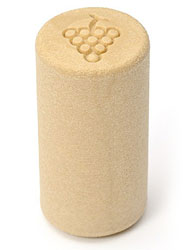 You said “Finally, synthetic corks are recyclable”. Question is how do I recycle corks? Do they go in with recyclables like plastic bottles?
You said “Finally, synthetic corks are recyclable”. Question is how do I recycle corks? Do they go in with recyclables like plastic bottles?
Sal
Name: Sal Runfola
State: NJ
Hello Sal,
Synthetic corks are not marked with a recyling number, but they are made of #7 plastic. Any recycling center that takes this plastic should be able to handle them just fine. If you are having trouble finding a location, go to https://search.earth911.com/ Type in “#7 Plastic Bottle” and your zipcode to find a location near you.
Happy Winemaking,
Ed Kraus
———————————————————————————————————
Ed Kraus is a 3rd generation home brewer/winemaker and has been an owner of E. C. Kraus since 1999. He has been helping individuals make better wine and beer for over 25 years.
How Beer is Made From Malting to Bottling
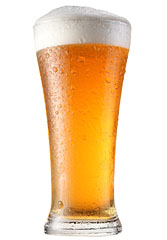 Beer is so delicious and refreshing that people often wonder how it is made. Making beer isn’t exactly rocket science, but making it tasty and flavorsome is certainly an art. Let’s see how beer is made delicious.
Beer is so delicious and refreshing that people often wonder how it is made. Making beer isn’t exactly rocket science, but making it tasty and flavorsome is certainly an art. Let’s see how beer is made delicious.
You start by using barley, fresh hops, yeast, and water. Barley makes the body of beer and hops are used to add flavor. Sugar from barley is consumed by beer yeast to produce alcohol, which is the driving force of beer. Here are the steps.
Malting
Brewing starts when barley is heated and dried. This makes the grains crack to release enzymes that are needed for mashing. Although barley is the main ingredient of beer, sometimes brewers experiment with other grains like wheat and rye.
Mashing
Dried barley, now called malt, goes through mashing where it is put into hot water for some time to activate enzymes. This helps the grain to break down and sugar gets released. Thus the water turns sweet and sticky. It is known as wort and is actually unprepared beer.
Boiling
The sugary liquid, wort, is boiled for some time and then hops are added to it. Hops are responsible for the bitterness in beer. They balance out sugar and add flavor to wort. Also, they are natural preservatives.
Fermentation
The wort is set to cool. After that it is filtered and yeast is added to it. The fermentation process begins here and it takes a few weeks as the yeast eats up sugar to create alcohol. It also creates CO2 which responsible for froth in beer.
Bottling
The beer produced at this stage is pretty much flat. It is bottled and artificially carbonated. Or it is allowed to age, where it carbonates naturally. With this process, you get a nice frothy beer that is nourishing and fulfilling.
Now that you know how to make beer, make sure you try it out and let us know how it went!
My Wine Exploded!
 I racked my wine after sweetening it back let it set for a week to make sure the fermenting had stopped, took my reading which was ok. bottled it, and in about a week it started to explode. I’ve been making wine for 8 years and this is the first time this has happen. What caused this to occur?
I racked my wine after sweetening it back let it set for a week to make sure the fermenting had stopped, took my reading which was ok. bottled it, and in about a week it started to explode. I’ve been making wine for 8 years and this is the first time this has happen. What caused this to occur?
Name: Barbara E.
State: MS
Hello Barbara,
What has happened is somewhat straight-forward. The most common reason for a fermentation to stop is because it ran out of sugar to ferment. The fermentation is all about taking wine yeast consuming the sugars and converting them into alcohol and CO2 gas. If you add more sugar back to the wine, for whatever reason, the fermentation can start up again.
It only takes the slightest amount of fermentation to create a lot of CO2 gas and pressure. The pressure builds up and either pops the cork, or what happens in the case of screw-cap bottles, the bottle fails. This is what happened in your cause. The fact that you have not had this problem before in 8 years I find remarkable.
For future batches you can do just as you have done before. That is: let the fermentation complete and clear; then add sugar to taste at bottling time. But before bottling also add Potassium Sorbate. This is a wine stabilizer that will help keep the wine from re-fermenting. It is also important that the wine be given plenty of time to drop out all the inactive wine yeast after the fermentation before you sweeten and bottle. This will also help to keep a re-fermentation out of your future.
Best Wishes,
Ed Kraus
———————————————————————————————————
Ed Kraus is a 3rd generation home brewer/winemaker and has been an owner of E. C. Kraus since 1999. He has been helping individuals make better wine and beer for over 25 years.
What's Going On With My Wine Making Kit?
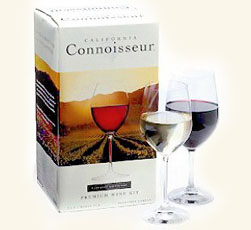 I just made 30 bottles of Cabernet Sauvignon California Connoisseur. I did all what the instructions said for the 28 days. The target was ok at 0.995 at the end. I omitted packets #4 and #5 (potassium Sorbate & Fining Agent ) My question is, my wine seems to be a little light to the taste, but letting it rest after opening did give it more body. Also laying the bottles on its side shows some sediment inside the bottle yet it was clear when I bottled it. What did I do wrong ?
I just made 30 bottles of Cabernet Sauvignon California Connoisseur. I did all what the instructions said for the 28 days. The target was ok at 0.995 at the end. I omitted packets #4 and #5 (potassium Sorbate & Fining Agent ) My question is, my wine seems to be a little light to the taste, but letting it rest after opening did give it more body. Also laying the bottles on its side shows some sediment inside the bottle yet it was clear when I bottled it. What did I do wrong ?
Name: Daniel B.
State: FL
Hello Daniel,
A wine having a light flavor is typically a symptom of trying to drive the alcohol level up with more sugar. This will bring the wine out of balance giving it a watery impression. When you let a wine sit open for a few minutes before drinking, as you did, it allows time for the aromas or bouquet to develop and release. This is done quite often with some wine, particularly red wines. The addition of these aromas will give the impression that the wine has more flavor.
As to having sediment in the wine bottles, this is a direct result of not adding the fining agent as you had indicated. It is very common for a newly made wine to look visually clear before it is actually done clearing. That is why a “fining agent” provided with these kits — to drop out what you can’t see.
Happy Winemaking,
Ed Kraus
———————————————————————————————————
Ed Kraus is a 3rd generation home brewer/winemaker and has been an owner of E. C. Kraus since 1999. He has been helping individuals make better wine and beer for over 25 years.
